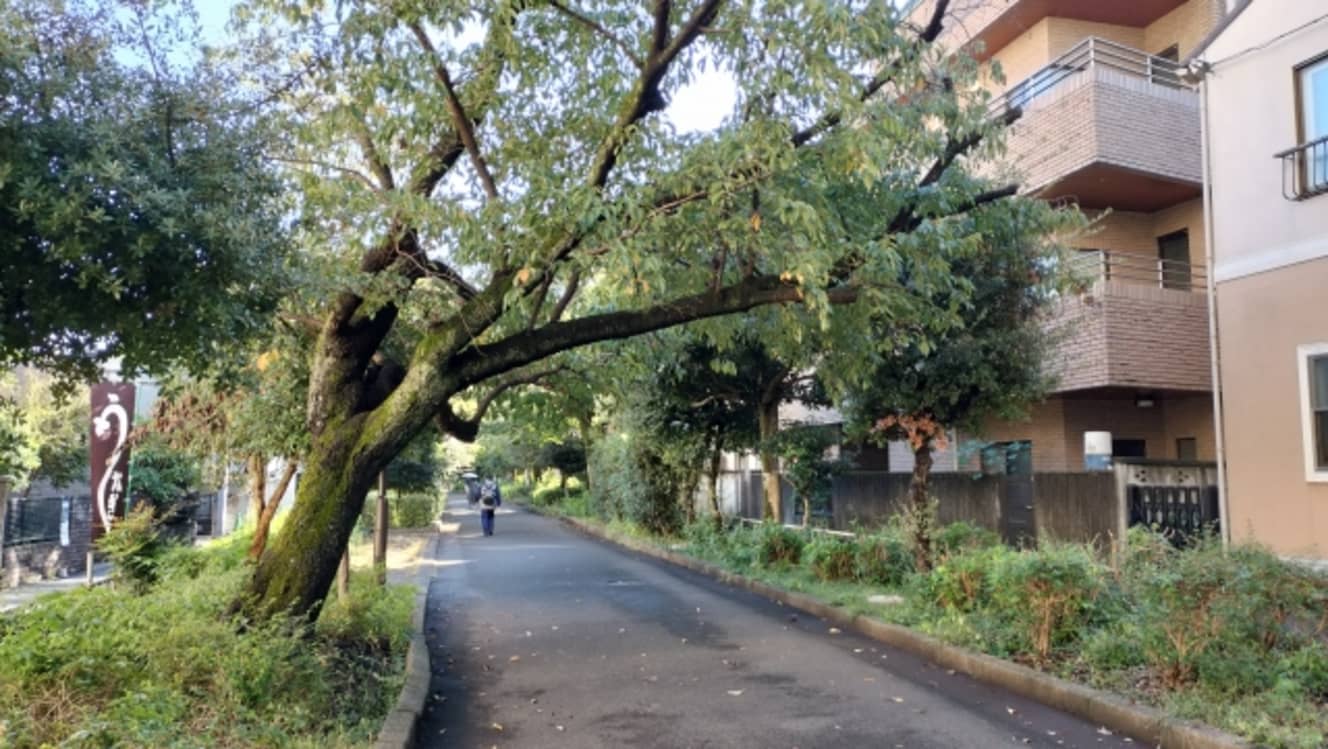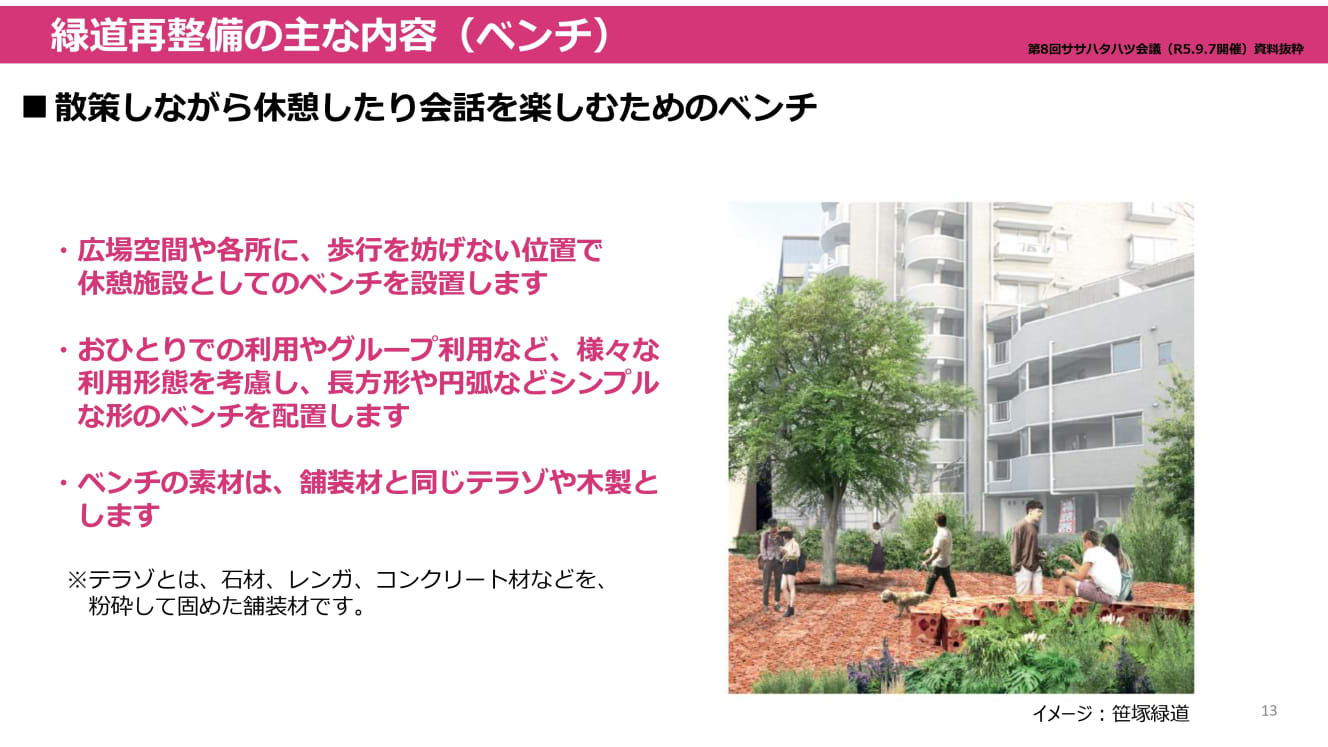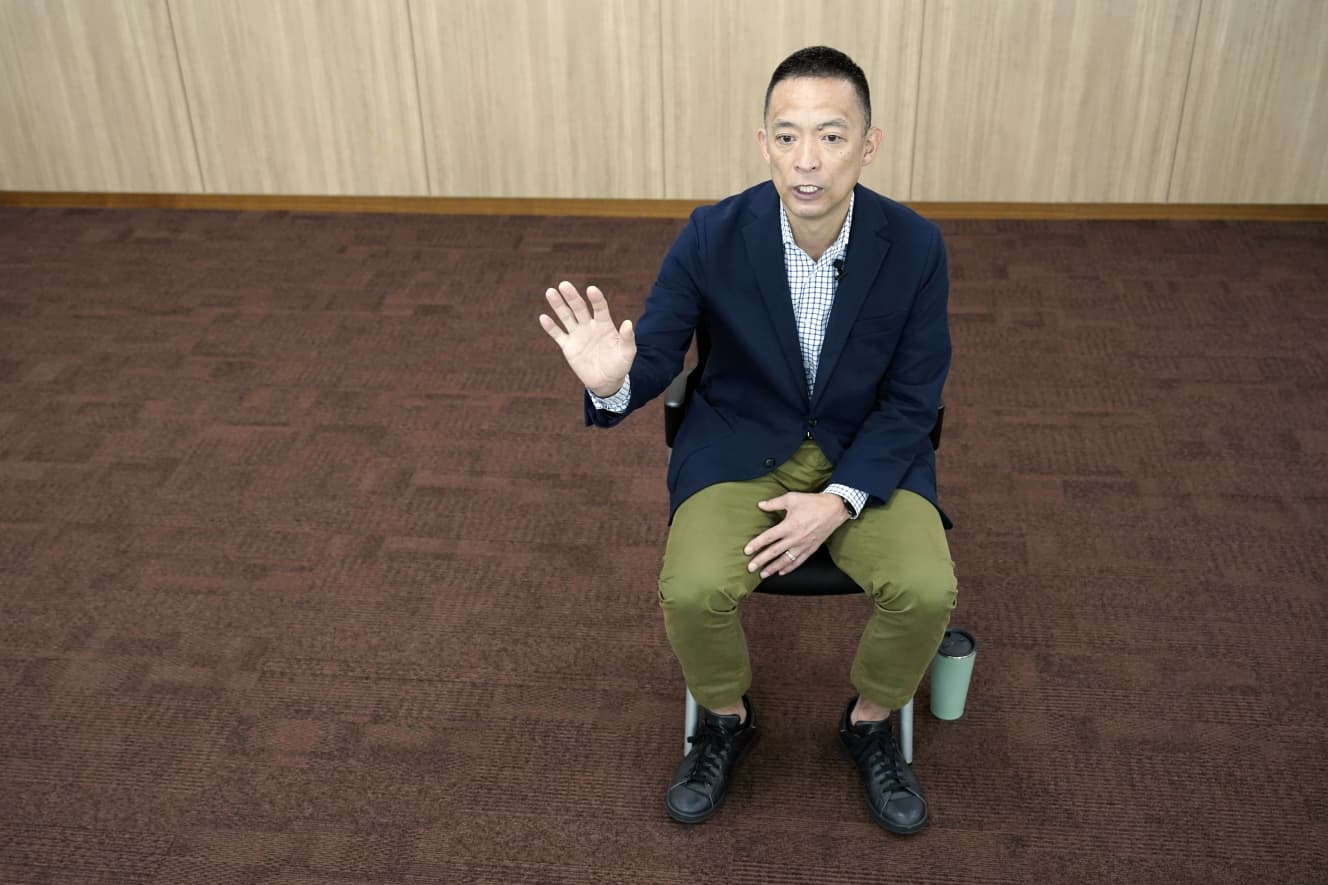4 million benches, logging…over 10 billion “Tamagawa-josui greenway” redevelopment plan “Does the Shibuya Ward Mayor’s personalization ever stop?”
MIYASHITA PARK, designer toilets…Shibuya Ward projects full of flashy measures
Shibuya Ward’s Miyashita Park, which was established in 1953 as a children’s park, was reborn in July ’20 as MIYASHITA PARK, a commercial facility that can hardly be called a “park,” after the land was leased to Mitsui Fudosan at a discount.
In the “THE TOKYO TOILET,” a project promoted by the Nippon Foundation and Shibuya Ward since 2008, it was discovered that the “transparent toilet” system, in which the glass in the private rooms becomes opaque when in use, did not function properly and the inside was in full view, causing an uproar. The “transparent toilet” system, in which the glass in private rooms becomes opaque when used, did not function properly. Other security concerns have been raised about the unique toilets created by Kengo Kuma and other famous designers for this project.
For better or worse, these are flashy and straightforward measures typical of Shibuya Ward Mayor Ken Hasebe, a former advertising executive (formerly of Hakuhodo).
In addition, Shibuya Ward is currently moving forward with a project to redevelop the 2.6-kilometer “Tamagawa Josui Old Waterway Greenway” that runs through the six districts of Sasazuka, Oyama, Hatagaya, Nishihara, Hatsudai, and Yoyogi, which has become the target of criticism from local residents.

The project is described as costing more than 10 billion yen, mainly for the cutting down of numerous trees along the greenway to create a farm, and the installation of 15 benches at 4-4.5 million yen each. Where in the world did this story come from?
Noriko Takao, a member of the Shibuya Ward Tamagawa-josui Greenway Users’ Association, expressed her surprise and indignation.
At a briefing for residents held on September 7 last year, when asked if the greenway redevelopment would cost about 10 billion yen, Mayor Hasebe said, ‘I wonder if 10 billion yen will be enough.
Furthermore, at the Budget Committee meeting in February of this year, the 1.45 billion yen budget for this year’s greenway redevelopment plan was decided, and when the ward assemblyman asked about the breakdown of the 10 billion yen in March, he replied, “I don’t know the breakdown.
It is a five-year plan that runs through Reiwa 2029, and work is scheduled to be done in five blocks, but it seems odd to say more than 10 billion yen when it is unclear how much money will be spent on what and when the breakdown is unknown.
Takao and the others had never been to a council meeting before, and had never even heard of the terms “petition” or “application. However, they started the association because they had questions and a sense of crisis about the plan to cut down trees along a familiar greenway and the way Shibuya Ward was spending money. They went to the assembly, consulted with ward assembly members and experts, and requested information disclosure, and in the process discovered various unnatural things.
One of them is the benches, which cost 4 million yen each. The price looks like a custom-made bench of a luxury brand, but the image shown in the “Main Details of Greenway Re-development” section of the “Overview of Re-development of Tamagawa-josui Old Waterway Greenway” (updated April 12, 2012) on the Shibuya Ward website shows a pink bench with a cork or tile-like joint pattern. The description there is as follows. The description is as follows.
The bench will be made of terrazzo or wood, the same material as the pavement. Terrazzo is a paving material made of crushed stone, brick, and concrete.

(From the “Outline of the Re-alignment of the Tamagawa-josui Old Waterway Greenway” on the Shibuya Ward website.) If you look for terrazzo benches on Amazon.com, you can find them for around 200,000 yen, so why the 4 million yen budget?
Normally, a typical bench in a park in Tokyo costs 200,000 to 300,000 yen. A “kamado bench” for disaster use, which can be used as a bench at all times and as a kamado for cooking food in the event of a disaster, costs about 340,000 yen. And yet, each bench costs 4,000,000 yen.
When I asked if the ward assemblyman had any ideas about using them as disaster benches, he replied, “Anyway, we only put up design-oriented ones. The pink “ I don’t even know where the pink “blocks” came from,” said Takao.
The design is more important than functionality, just as in “THE TOKYO TOILET. Unlike toilets, however, big names such as Kengo Kuma do not appear in the brief.
The name of the plan is full of katakana, like an ad agency’s proposal: “I heard it is written as ‘388’ and is to be read as Sasahata Hatsu. ……
Moreover, many Shibuya residents do not seem to be aware of this greenway redevelopment plan. This is because of the many advertising techniques used.
The name of this greenway redevelopment plan is called something like “Sasahatahatsu FARM,” he said.
It seems to be an acronym for Sasazuka, Hatagaya, and Hatsudai, but since neither Nishihara, Oyama, nor Yoyogi are in the Midorimichi area, everyone thought it had nothing to do with them.
Moreover, it is said that “388” is written and read as “Sasahatahatsu,” but the locals don’t know that, so we too read it as “Sanhachihachi” until the logging issue arose and we did a lot of research and learned about it.
We are doing various things under the name of 388, but local people cannot participate because they don’t know what we are talking about. We are proceeding with the project to the exclusion of local residents,” said Takao.

The “Dear Tree Map” related to the “388FARM” project has an unmistakable “advertiser” smell.
In the “388FOREST: Passing on the baton of life As a result of the diagnosis by an arborist, a tree doctor, about 20% of the trees are scheduled to be retired soon. This time, 15 of those trees will pass the baton to new life for different reasons. He explained.
The site allows visitors to post messages to each tree with a heartwarming illustration of the tree, with copy such as “Someiyoshino, a stalwart duo” and “Keyaki, always with kummokusei,” along with the reason for cutting down the tree.
What is even more disturbing is that these sentimental images are being used to cover up an important fact.
According to a survey conducted by the district, 189 trees were initially deemed unsound, and 31 of them have already been cut down. But when we had Eijiro Fujii, professor emeritus of environmental planting at Chiba University, inspect the site, he told us that most of the trees were in good health,” said Takao.
In response to these comments and criticisms, Mayor Hasebe changed his policy, saying, “We want to keep the trees that can be kept. At a meeting held on April 24 this year to explain the situation to residents, he explained that the district plans to keep 134 of the trees that were targeted for felling.
However, Toshihito Horikiri, a member of the Shibuya Ward Assembly who has investigated numerous problems in Shibuya Ward, including the tree felling plan, expressed the following harsh opinion.
Why do they want to cut down so many trees in the first place?
They explain that the greenway is being reconstructed because it is deteriorating, but this is just a distraction to distribute money to Hakuhodo and friends of the ward mayor, not because they want to develop the area.
Of the total cost of the entire greenway redevelopment project of 11 billion yen, 1.4 billion yen is budgeted for the current fiscal year 50 Of that amount, 399 million yen is for the overall design fee, and 170 million yen is for the designer.
Within such a budget, there are 15 benches costing 4 million yen each.
No experience in greenway development…unclear casting reasons
One of the “friends” that Mr. Horikiri is keeping a close eye on is Mr. Tsuyoshi Tane, who is designing the greenway redevelopment plan, including the 4 million yen benches.
The total amount is 769.8 million yen, including 50 million yen in Reiwa 2010, 10 million yen in Reiwa 2011, 54 million yen at the end of Reiwa 2021, 158 million yen in Reiwa 2022, 290 million yen in Reiwa 2023, and 2024 278.8 million yen in Reiwa 2024, and we have learned that an extremely large amount was given to his personal company through a roundabout way called re-consignment without going through the bidding process. The information disclosure request revealed that a very large amount of money had been transferred to Takeshi Tane’s personal company bypassing the re-consignment process without going through the bidding process.

Mr. Tane is an architect living in Paris, France, whose “Kofun Stadium” was selected as a finalist in the national stadium basic concept design competition for the 2020 Tokyo Olympics bid. However, Mr. Horikiri questions his “track record.
Mr. Tsuyoshi Tane is a first-class architect who did not qualify as a first-class architect, but obtained his license in Denmark (from an interview with Hitonari Tsuji of “designstories” Presented by Jiryutsu Jiryutsu x Teikyo University).
This is different from Japanese architects who have to be able to do the full package, including lines and structural calculations, and he seems to be a kind of designer.
The first prize in the competition for “Estonian National Museum” was also won by a collaborative team, not by an individual.
Due to the fact that I lived in Paris when I was a student and studied photography at the Faculty of Arts, I asked many of my architectural acquaintances in Paris, but they were not well known in Paris at all.
I also visited all of Mr. Tane’s buildings in France, Estonia, and Finland, but all he did was work for construction companies, and in addition, he never worked on green space development,” said Mr. Horikiri.
So why was Mr. Tane singled out? Mr. Horikiri based his reasoning on the 300 pages of information disclosure documents he obtained after filing the lawsuit.
He won the Minister of Education, Culture, Sports, Science and Technology’s Art Encouragement Prize for New Artists in 2005 for his team’s award-winning work at the Estonian National Museum, and was selected as a member of Governor Yuriko Koike’s Tokyo Metropolitan Government Future Vision Advisory Council.
The same members included Shibuya Ward Mayor Hasebe. From there, Mayor Hasebe started a plan to build a soccer stadium in Yoyogi Park in 1919, and Mr. Tane was asked to design the stadium using an outside organization.
However, the COVID-19 crisis put a damper on the plan, and Governor Koike turned it into turf, and construction came to a halt.
However, you had promised to pay Mr. Tane some money. In fact, while the project has come to a standstill, money has continued to be paid to Mr. Tane since the project had not yet started,” (Horikiri, ward assemblyman).
So, how did Shibuya Ward request Mr. Tane?
In April Reiwa 2021, Shibuya Ward paid a total of 118,446,000 yen to a company called Tokyo Landscape Design as a design consignment contract fee in the form of a proposal contract, without going through a bidding process.
However, for some reason, the re-commission was awarded to two individuals who are consultants for Tokyo Landscape Design, an affiliated organization of Shibuya Ward.
Mr. Tane was also commissioned by Tokyo Landscape Design,” said Mr. Horikiri.
In addition, as part of the “388FARM β” greenway redevelopment event, Hakuhodo and Mitsui & Co. are jointly developing and operating the “shibuya good pass” service as a demonstration experiment.
The plan is to create a field in Shibuya, have everyone cultivate it and eat it at a nearby restaurant, and it seems that the greenway will be used for this purpose.
We therefore inquired with the Coordination Section, Greenway and Road Structure Planning Division, Shibuya Ward, about “why the benches should be designed,” “why 31 trees were cut down,” and “why Mr. Tsuyoshi Tane was approached to design the greenway redevelopment plan,” but unfortunately, we did not receive a response by the deadline.
There are countless other mysterious projects and “friends” involved in them that Mr. Horikiri pointed out. Moreover, all of them have names with unknown meanings, and it is extremely difficult to grasp the full picture of their contents, involvement, and so on.
How much will the current 11 billion yen greenway improvement plan balloon to? How much of that amount is really necessary? At the very least, the residents of Shibuya Ward, who pay taxes, need to keep a close eye on the situation.
Interview and text by: Wakako Tako